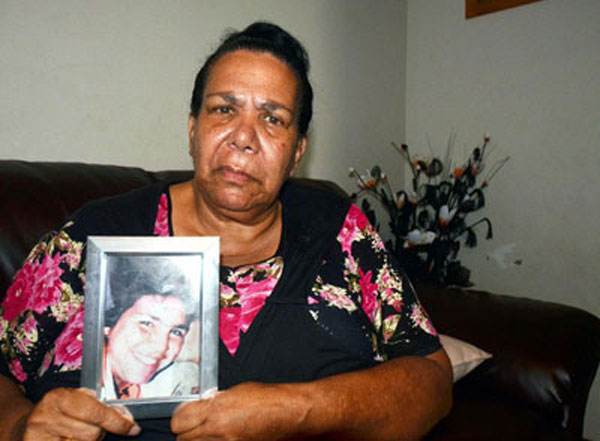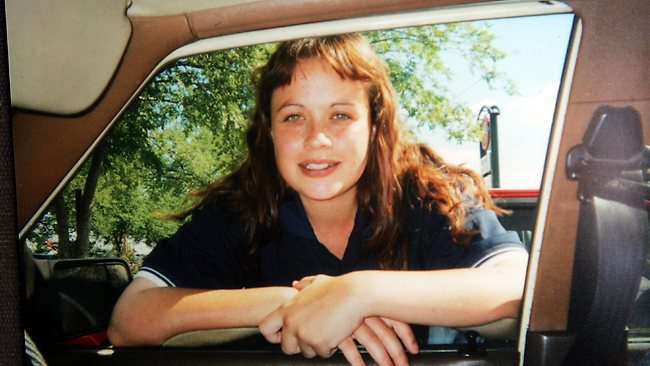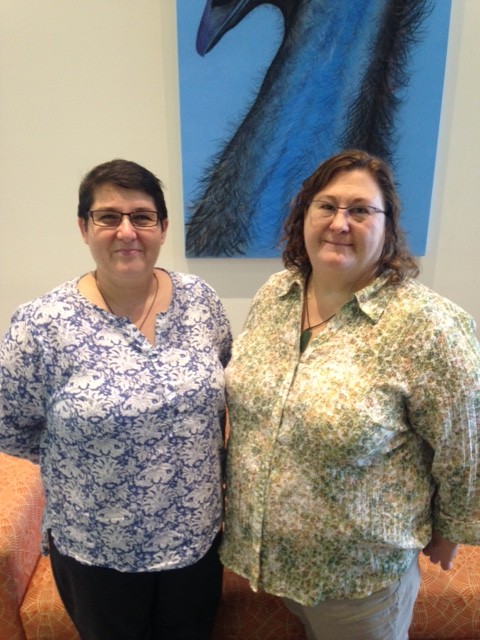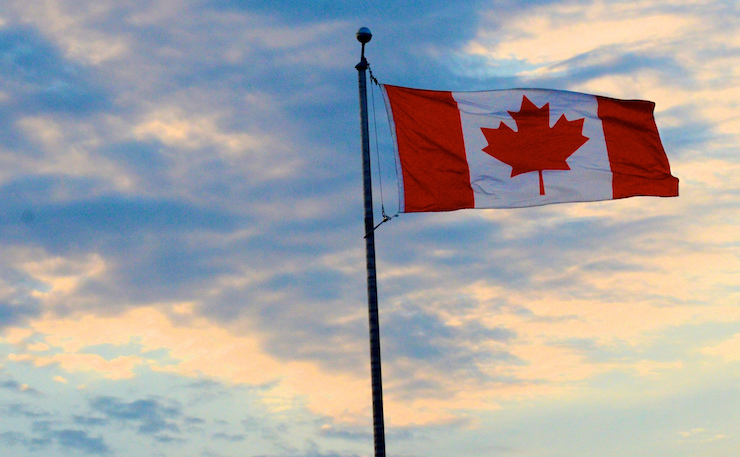With the change of government in Canada, hard questions are being asked about hundreds of ‘missing’ Aboriginal women. As Amy McQuire reports, there are striking similarities between the treatment those women received and a number of cases in Australia.
In 1990, Aboriginal woman Muriel Craig Walker walked into the police station on the mid-north coast town of Bowraville and handed in a picture of her beautiful, 16-year-old daughter Colleen. She had taken the short drive from her home at Sawtell to the picturesque town to report her fair-skinned daughter missing.
Her sister Elaine Walker, who has since passed away, later told me that as a child, her elders had taught her to respect the police man, and he would in turn do right by the local mob. But what Muriel found that day was the exact opposite.
“They asked me was she my daughter. They said ‘she don’t look Aboriginal to us.’ There were two policemen in the station at the time and that is what they said to me. I said, ‘I wouldn’t be silly enough to come in here and report her missing, I am not that stupid’.”
Muriel’s daughter Rose Griffin tells a similar story: “On that day we went to the police station and they turned around and said to mum and myself, ‘Oh, did she go walkabout?’ That was their reaction. We thought they were supposed to be there to help us and we didn’t get the help.”
It was several months before police took Muriel’s statement but they hardly contacted her from that point. With no hope in the police, the family took up the search for Colleen.
“I thought they would actually take … a statement from me or something but he didn’t even do any of that,” Muriel later told a Parliamentary Committee tasked with investigating the case.
“I just left the photo there and walked out. I mean that was the law, what was I going to do? I just went and after that they did not take Colleen’s missing very seriously, not until later when the other two went missing.”

Colleen Craig Walker was the first of three children killed on Bowraville mission. They disappeared from the same stretch of road within several months of each other from 1990-1991. There is only one man accused of committing the crimes – a predatory white man who hung around the mission – and the families have spent the past 25 years campaigning to get him back on the witness stand. It is a complicated story, which you can read about here and here, but the lack of justice, the suffocating layers of trauma that have fallen on their families, all stem back to these failures at the very beginning.
Bowraville, a mission where segregation had been in full force in the pubs, cafes and local movie theatre, and one of the stops of the 1965 Freedom Rides, still held on to a less visible segregation: that which made it acceptable for a police officer to question a mother about whether her beloved missing daughter was really hers and belittled her concerns about her daughter’s safety purely because of her race. It is a racism that still straddles the thin blue line.
To this day, Colleen has never been found. No one has ever been held responsible for her death.
Detective Inspector Gary Jubelin, the police officer who spearheaded a second investigation into the deaths of the three children – Colleen, Evelyn Greenup (4) and Clinton Speedy-Duroux (16) – admitted that when he first began investigating the murders he himself did not take the community’s claims of racism seriously.
“The families told me right from the start in 1997 that people did not care because they are Aboriginal. I naively thought they were wrong, but I 100 per cent support what they say,” he said.

The story of Colleen Walker is not an isolated one. When Aboriginal woman Lateesha Nolan went missing from Dubbo in 2005 her family’s concerns were not initially taken seriously. Police speculated the dutiful mother-of-four, who lived for her children, may have simply run off with another man. It wasn’t until six months later, when her cousin’s partner Kristy Scholes, an Aboriginal woman from Kempsey, was found murdered in the same house where Lateesha was last seen, that police began to look more deeply into the disappearance, tying it to Lateesha’s first cousin Malcolm John Naden. By that point, Malcolm had disappeared and was hiding out among the animals in Dubbo’s famous open-air zoo. He would spend the next seven years dodging police until he was finally found in the rugged Barrington Tops area living off stolen goods from abandoned holiday cabins.
Although Malcolm was given a 21-year sentence for Lateesha’s murder, the beautiful Aboriginal mother has never been found. It’s easy to wonder what would have happened if there had been more diligence when Lateesha first went missing. Maybe Kristy Scholes would still be alive. Maybe Lateesha’s children would have a grave to grieve over.
As Australia takes part in a much needed conversation about family violence we are reminded again and again that the lives of Aboriginal women simply do not matter, despite shallow media protestations that they do.
Aboriginal filmmaker Iven Sen, whose film Mystery Road tracks an Aboriginal detective investigating the murders of young Aboriginal girls, told of his frustration in an interview in The Australian two years ago.
“For me, it’s about a lack of connection and sensitivity and identification because a lot of the time police are sent out to lock them up and not help them,” Sen told the paper. “So when they’re victims of crime and the roles are reversed, it can take a bit to turn that orbit around the other way. As an Indigenous victim of crime in this country, you can’t avoid it.”
It has taken more than a decade, but across the Pacific Ocean, our Aboriginal sisters in Canada have finally forced the government to listen. It has taken more than 15 years of concerted campaigning and a new administration under the Liberal Prime Minister Justin Trudeau, who has shown promising signs of a departure from his predecessor Stephen Harper’s atrocious record on Aboriginal rights. Last week, Mr Trudeau announced a national inquiry into missing and murdered Aboriginal women.
“The victims deserve justice, their families an opportunity to heal and to be heard,” he said. “We must work together to put an end to this ongoing tragedy.”
Earlier this year the Royal Canadian Mounted Police (RCMP) found that 70 per cent of Aboriginal women in Canada die at the hands of an Aboriginal perpetrator, emphasising the “strong nexus to family violence.”
But there is another overlooked aspect, according to the Globe and Mail newspaper, which in a report earlier this month found Aboriginal women were seven times more likely than non-Aboriginal women to be victims of serial killers – largely non-Indigenous – with most of them killed in the cities, where they are most vulnerable and highly visible.
This was highlighted in one of Canada’s most infamous serial killer cases, that of pig farmer Robert Pickton, who preyed on vulnerable women on the streets of downtown Vancouver. Many of his victims were Aboriginal.
Cree academic Kiera Ladner, from the University of Manitoba, told 98.9 FM’s Let’s Talk programme that there had been two occasions in the Pickton case where the testimony of Aboriginal women had not been taken seriously. It made a significant impact on the psyche of Aboriginal communities, who have for too long become accustomed to their pleas being ignored and silenced.
“It came out in the trial, at least two incidents of (Aboriginal women) walking into the police station some years prior to him finally being arrested, and reporting that she had escaped from (Pickton) at this farm,” Dr Ladner told 98.9 FM in Brisbane.
“…And it was just dismissed. There was no real police action on this.”
When these facts came out, it sent a clear message to Aboriginal women across Canada:
“It was a real trying time. [It said] if you are Aboriginal it doesn’t really matter.
“If you are an Aboriginal woman that’s even worse. We don’t matter.”
For now, no one really knows the true scale of the crisis. The numbers of missing and murdered Aboriginal women in the country is a conservative estimate. The RMCP admits to “1,200 women” since 1984. But the sad fact about that, Dr Ladner says, is “of that number, most of them are in fact murdered. Most of those are homicides. The missing portion is… around 400.”
Only about 18 per cent of those murders have been solved, suggesting there has been a devastating unwillingness by police to investigate, and deliver justice to the victims’ families.
“[But] no one really knows the stats… that’s what’s being admitted,” Dr Ladner says.
“It wasn’t until recently: the stats on Aboriginal victims weren’t counted. So if you come in and report someone missing, it is not noted that that person is an Aboriginal woman. But if it is a violator, a perpetrator of a crime, a suspect of a crime, it is always noted ‘someone of Aboriginal ancestry, appears to be Aboriginal’.”
There’s a key focus on the Aboriginality of an offender, but not on the victim.
Dr Ladner’s colleague at the University of Manitoba, Anishinaabe academic Myra Tait, told 98.9 FM this crisis is not new.

“This is a tragedy that continues to happen. In Manitoba we had an Aboriginal justice inquiry back in the 80s. This [came from the]death of a young Aboriginal woman, whose murder was never investigated despite the fact the community knew what happened, knew who the perpetrators were, and the police simply refused not to act. It was finally investigated 16 years after. Everyone in the community knew what happened, and the police simply chose not to act.
“The second incident that [sparked]the inquiry, the shooting of JJ Harper, an Aboriginal man leader in his community, well known, walking down the street ‘guilty of walking while Indian’, he was shot dead by police because he refused to answer their questions.
“He was doing nothing wrong. Out of those two incidents we had the Aboriginal justice inquiry.
“What the commission found was the continued existence of sexism, racism, and indifference, fuelled the lack of responsiveness from the police force. This is back from the 80s. I really don’t think it’s changed.”
Both incidents have uncomfortable parallels to the Bowraville murders, and the case of Palm Islander Mulrunji Doomadgee, who died on the floor of the Palm Island watch-house after being arrested for swearing at a police officer.
Underlying this problem is the fact that Aboriginal people, particularly women, are painted as deviants. They are slandered and pushed to the bottom of society and become less than women in the eyes of the police and media.
“They were prostitutes, they were drug addicts, they were runaways, they were street workers, they were homeless,” Ms Tait says.
“In many instances, none of those claims were even true. But even for those that were true, we don’t give up our rights as human beings. Yet that seemed to be ok for our police forces.”
“They didn’t look at the fact these were mothers and sisters, aunties and daughters. Human beings,” Dr Ladner says quietly.
Dr Ladner says the way the crisis around missing and murdered is framed, with the RCMP talking around family violence in Aboriginal communities, allows Canada to re-direct blame away from the underlying issues.
“If we say that it’s a domestic situation then we can say it’s an Indian problem. If we say it’s about people being vulnerable because they are street workers, or problems with addictions, it’s an Indian problem,” Dr Ladner says.
“What it doesn’t tell is what the RCMP is hiding, is that it’s really that white problem. It’s about the way that Aboriginal women, and people, in both countries, are looked upon, as being nothing more than garbage on the street.
“If someone can be sitting there and beaten nearly to death and people walking over them because they are just a drunken Indian, that really says something about it being a white problem. It’s only recently that I think is starting to come out. This is a white problem.
“We have issues of violence…. of violence of every kind [in communities]… but these are issues of colonialism, this isn’t because of Aboriginal people. This is really, at the heart of it, a struggle with what has happened in the last 150-200 to 500 years.”
Back in our own country, we are a long way from our own inquiry into missing and murdered Aboriginal women. Aboriginal women are more likely to be victims of homicide than non-Aboriginal women, the majority of it perpetuated by a partner, and by an Aboriginal partner, according to the Australian Institute of Criminology.
But at its heart, the devastating family violence within Aboriginal communities, where Aboriginal women remain the silent victims, has festered due to the same issues, the type that stretch back to the beginning of the invasion.
The devastating structural apathy that greeted Muriel Craig Walker and Lateesha Nolan’s family when they reported their daughters missing is an apathy that stretches into the reporting of Aboriginal family violence. Aboriginal women feel let down by a criminal justice system that refuses to believe them and instead jails them at ever increasing rates – rates that have gone up 74 per cent the past 15 years alone. They are jailed for their poverty, for their visibility. They are jailed for retaliating against their attackers because continually, when they turn up to the police station, the system fails them.
This is an issue of colonialism, of the way we treat the lives of Aboriginal women, who are told, like our sisters over in Canada, that we simply do not matter.
To listen to Amy McQuire’s full interview with Dr Kiera Lander and Myra Tait, download the podcast here.
Donate To New Matilda
New Matilda is a small, independent media outlet. We survive through reader contributions, and never losing a lawsuit. If you got something from this article, giving something back helps us to continue speaking truth to power. Every little bit counts.





